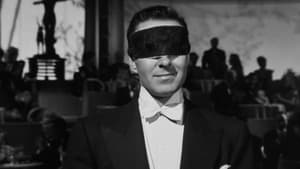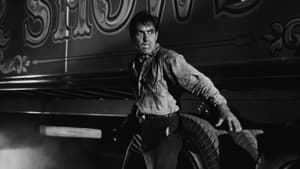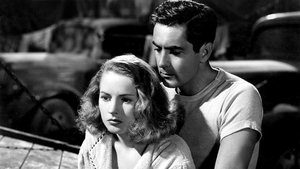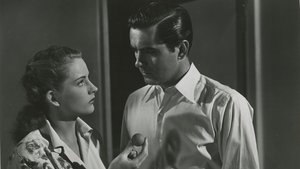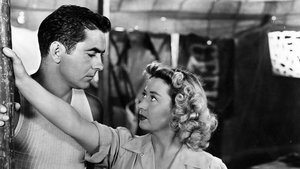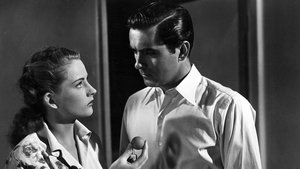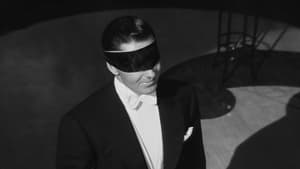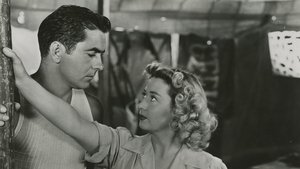Contact: info@alwanfilm.com
Video Sources 0 Views

Synopsis
Nightmare Alley 1947 Colorized Review: A Dark Masterpiece of Film Noir

Introduction
In the vast landscape of 1940s Hollywood, few films exemplify the dark allure of film noir as masterfully as Nightmare Alley (1947). Directed by Edmund Goulding and based on William Lindsay Gresham’s novel of the same name, the film explores the grim underbelly of the American carnival circuit and delves into themes of ambition, deception, and downfall. Known for its unflinching portrayal of human weakness and moral corruption, Nightmare Alley is a quintessential example of the noir genre’s capacity to expose the shadows lurking behind the American Dream. In this review, we’ll explore the movie’s storyline, the standout performances, and its ongoing legacy as one of the most daring and psychologically rich films of its era.
Check The Full Colorized Movies List
Check Our Colorized Movies Trailer Channel
Understanding Nightmare Alley 1947 Colorized: Director, Cast, and Genre
Edmund Goulding’s Direction
Edmund Goulding, a director known for his versatility in working across genres, brought his refined cinematic eye to Nightmare Alley. While Goulding was best known for helming glossy Hollywood dramas and romances, Nightmare Alley gave him the opportunity to dive into darker, more cynical territory. His direction emphasizes the psychological depth of the characters while also maintaining a tense and eerie atmosphere throughout the film. Goulding’s vision was clear: he aimed to present a cautionary tale of human greed, moral ambiguity, and the pursuit of power, all set against the backdrop of carnival mysticism.
The Cast and Their Performances
At the heart of Nightmare Alley is Tyrone Power, delivering one of the most transformative performances of his career. Known primarily as a matinee idol for his roles in swashbuckling adventures and romantic dramas, Power took a bold leap into darker material with his portrayal of Stanton “Stan” Carlisle, an ambitious yet morally compromised carnival worker. Power’s portrayal is riveting, capturing the complexities of a man driven by greed and manipulation, whose own psyche ultimately becomes his downfall.
Joan Blondell co-stars as Zeena, the seasoned carnival mentalist who introduces Stan to the art of deception. Blondell’s performance brings both vulnerability and world-weariness to the character, serving as the moral anchor in a world filled with fraudsters. Supporting Power and Blondell are Helen Walker as the calculating psychiatrist Lilith Ritter, and Coleen Gray as the innocent Molly, whose trust in Stan is tragically misplaced. These supporting performances help to flesh out the morally ambiguous world that the characters inhabit.
Genre: A Film Noir Like No Other
Nightmare Alley is a classic example of film noir, a genre characterized by its dark, cynical worldview, shadowy cinematography, and morally complex characters. While many noir films center around crime and urban corruption, Nightmare Alley ventures into the world of carnivals, showmen, and fraudulent spiritualists, bringing a fresh setting to the genre. The film’s noir elements are amplified by its examination of ambition and downfall, themes that echo through the lives of its characters as they navigate the murky waters of deceit and manipulation.
Exploring the World of Nightmare Alley 1947 Colorized: Plot and Characters
Detailed Synopsis
The story of Nightmare Alley begins in the seedy, nomadic world of traveling carnivals, where Stanton Carlisle (Tyrone Power) works as an assistant to the aging mentalist Zeena (Joan Blondell) and her alcoholic husband Pete. Fascinated by the power of manipulating people’s minds, Stan learns the tricks of the mentalist trade, including an intricate coded system that allows Zeena and Pete to perform seemingly supernatural feats. Driven by greed and ambition, Stan seeks to elevate himself beyond the carnival circuit and sees an opportunity to do so when Pete dies under suspicious circumstances.
Stan soon partners with Molly (Coleen Gray), a fellow carnival performer, and together they set out to conquer high society by masquerading as spiritualists capable of communicating with the dead. Along the way, Stan encounters Dr. Lilith Ritter (Helen Walker), a cunning psychiatrist who helps him exploit his wealthy clientele. However, as Stan’s deceptions grow more elaborate, so too does his downfall. His hubris and greed eventually catch up with him, leading to a devastating collapse that mirrors the rise-and-fall narrative often found in film noir.
Complex Protagonists and Supporting Characters
Stan Carlisle is one of the most complex protagonists in noir history. His journey from a small-time hustler to a successful, yet morally bankrupt conman is both fascinating and tragic. Power’s portrayal of Stan’s inner turmoil, as he grapples with the consequences of his lies and manipulations, is compelling throughout the film.
Zeena, Molly, and Lilith serve as pivotal figures in Stan’s life, each representing different aspects of his journey. Zeena is the mentor who introduces him to the world of mentalism, Molly represents the innocence he corrupts, and Lilith is the ultimate femme fatale, helping Stan rise to power while simultaneously orchestrating his downfall. The dynamic between these characters adds layers of complexity to the film’s exploration of morality and ambition.
The Art of Film Noir Cinematography
The Visual Style of Nightmare Alley
Film noir is known for its striking visual style, and Nightmare Alley is no exception. Cinematographer Lee Garmes, a veteran of the industry, employs the use of low-key lighting, deep shadows, and stark contrasts to create an atmosphere of suspense and foreboding. The film’s carnival scenes, in particular, are bathed in moody, atmospheric lighting that emphasizes the seediness and deception inherent in the world Stan inhabits.
The framing of certain shots—such as Stan’s final descent into madness—is done with precision, using close-ups and sharp angles to visually represent his psychological unraveling. Garmes’ work on Nightmare Alley is a masterclass in how to use light and shadow to enhance a film’s themes of deception and moral corruption.
Noir Aesthetics and Symbolism
Beyond the lighting and composition, Nightmare Alley is rich in symbolism, a hallmark of the noir genre. The film’s frequent use of mirrors and reflections is particularly notable, symbolizing the duality of Stan’s character and his inability to escape the consequences of his actions. As Stan manipulates others, he is, in a sense, trapped by his own lies, much like the distorted reflections in the carnival’s funhouse mirrors.
The carnival setting itself is a symbol of illusion and deception, perfectly complementing the noir themes of moral ambiguity and corruption. The gritty, transient nature of the carnival mirrors the instability of Stan’s ambitions, and the eventual unraveling of his schemes is foreshadowed by the carnival’s temporary and unstable world.
Exploring the Dark Themes of Nightmare Alley 1947 Colorized
Ambition, Greed, and Moral Corruption
At its core, Nightmare Alley is a story about the dangers of unchecked ambition and the moral corruption that can accompany the pursuit of power. Stan’s rise from carnival worker to successful conman is driven by his insatiable desire for wealth and status, but his methods—rooted in manipulation and deceit—ultimately lead to his destruction. The film paints a bleak picture of the American Dream, showing how ambition, when unmoored from morality, can become a nightmare.
The Psychological Downfall of the Protagonist
Like many noir protagonists, Stan’s downfall is as much psychological as it is physical. His increasing paranoia, guilt, and self-deception lead him down a dark path from which there is no escape. The film’s climax, in which Stan ends up back where he started—reduced to working as a “geek” in a carnival sideshow—serves as a powerful and tragic reminder of the cyclical nature of his fall. His ultimate fate is one of the most haunting in noir history, as it reveals the full extent of his psychological collapse.
The Debate Over Nightmare Alley 1947 Colorized’s Reception
Critical Reception
Upon its release in 1947, Nightmare Alley received mixed reviews. While critics praised Tyrone Power’s daring performance, many were put off by the film’s bleak tone and morally ambiguous characters. Audiences, accustomed to seeing Power in more heroic roles, were also divided in their reactions. Despite this, the film has gained a cult following over the years, and modern critics now recognize Nightmare Alley as one of the most important—and daring—films of the noir genre.
Controversy and Censorship
One of the reasons Nightmare Alley struggled at the box office was its controversial subject matter. The film’s portrayal of moral corruption, manipulation, and mental illness was seen as too dark for mainstream audiences at the time. The Production Code Administration, which enforced Hollywood’s moral guidelines, had concerns about the film’s depiction of carnival life and its portrayal of Stan’s ultimate fate. Although no significant cuts were made, the film’s dark themes were seen as risky, contributing to its lukewarm initial reception.
Influence and Legacy: Nightmare Alley 1947 Colorized’s Impact on Cinema
A Noir Classic That Stood the Test of Time
Over the years, Nightmare Alley has gained recognition as a noir classic, appreciated for its bold storytelling, psychological depth, and unique setting. The film’s influence can be seen in later works that explore similar themes of ambition and moral downfall, particularly in films like A Face in the Crowd (1957) and Requiem for a Dream (2000). Tyrone Power’s performance is now regarded as one of his best, and the film itself is hailed as one of the most uncompromising noir films of its era.
Guillermo del Toro’s 2021 Remake
In 2021, director Guillermo del Toro released a highly anticipated remake of Nightmare Alley, further cementing the original film’s lasting legacy. While del Toro’s version takes creative liberties with the source material, the core themes of ambition, deception, and downfall remain intact, highlighting the timeless nature of the story.
Where to Watch Nightmare Alley 1947 Colorized
For those interested in experiencing the original Nightmare Alley (1947), the film is available on a variety of streaming platforms, including Criterion Channel and Amazon Prime Video. It is also widely available on DVD and Blu-ray, often packaged with bonus features that explore the making of the film and its impact on cinema history.
Conclusion
Nightmare Alley (1947) stands as a powerful and enduring example of film noir’s capacity to explore the darker sides of human nature. With its haunting exploration of ambition, greed, and moral decay, coupled with standout performances and striking visual style, the film remains a chilling reminder of the consequences of unchecked ambition. Whether viewed in its original form or through the lens of modern remakes, Nightmare Alley continues to captivate audiences with its gripping tale of human frailty and downfall.
